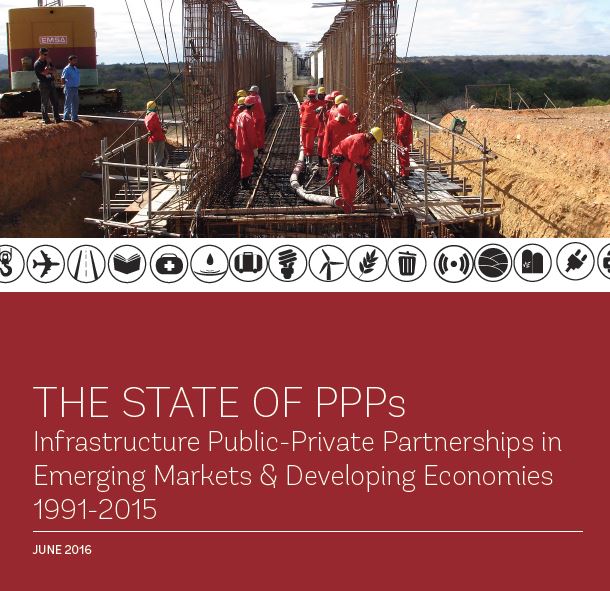Publications
Filter by
457 results found
This policy brief outlines promising ideas to attract instiutional investors to pay for infrastructure they have not convinced pension funds or affluent individuals to invest, especially in emerging economies with untested issuers, The “tax-kicker” bond being proposed here could solve this issue.


This document is the fifth edition of an informational tool and benchmarking index that assesses the capacity of countries in Latin America and the Caribbean to carry out sustainable public-private partnerships (PPPs) in infrastructure.


The study provides a quantitative analysis of the potential gains that would stem from improving efficiency in infrastructure spending in Latin America and the Caribbean.

Through maps, charts and images, the Atlas combines scientifically reliable data sources to provide a complete view of Africa’s energy needs, resources and opportunities.

This paper examines recent arguments and trends in the discussion around sustainable infrastructure.

The European Investment Bank adopted the EIB Group Gender Strategy on 13th December 2016, building upon an extensive review of and alignment with relevant EU legislation and policy documentation.

The European Investment Bank adopted the EIB Group Gender Strategy on 13th December 2016, building upon an extensive review of and alignment with relevant EU legislation and policy documentation.

The paper discusses the state and the way forward for Africa's infrastructure, with a strong focus on quality infrastructure.

ICA’s flagship report, Infrastructure Financing Trends in Africa, shows trends of financing flows to infrastructure projects in Africa based on collected data from various stakeholders.

The Joint MDB Statement for Crowding-in Private Finance builds on the previously approved Principles for MDBs’ Strategy Crowding-in Private Sector Finance for Growth and Sustainable Development, and the 2016 Joint Declaration of Aspirations on Actions to Support Infrastructure Investment.


This report seeks to identify key capital markets instruments that can help mobilize institutional investors to infrastructure and small and medium enterprises (SME) financing in emerging market economies (EMEs).





These guidelines, circulated by the MoF in September 2016, task the finance departments at all levels of government with arranging PPP project preparation, budgetary funding, procurement, budgetary expenditures and revenues, and performance management etc.


This policy outlook paper series is part of the Leadership Partner Program with the National Australia Bank.





The purpose of the present publication, Towards better infrastructure products: a survey of investor s perceptions and expectations of infrastructure investment , is to conduct the first in-depth study of the perceived role by infrastructure assets for investors.

The PFRAM, developed by the IMF and the World Bank, is an analytical tool to assess the potential fiscal costs and risks arising from PPP projects.


This report uses data from the PPI Database to analyze broad trends of PPP investment in infrastructure from 1991 to 2015.



The objective of the Diagnostic is to provide strategic, customized advice to client countries so they can make informed decisions in determining an operational plan for their PPP program, the choice of public investment vis-à-vis PPP, and type of PPP.


The report discusses forms of intervention and trade-offs, enabling factors, and evidence from case studies and stakeholder consultations in the areas of water, agriculture and energy. The report includes recommendations for a possible roadmap and funding options.



